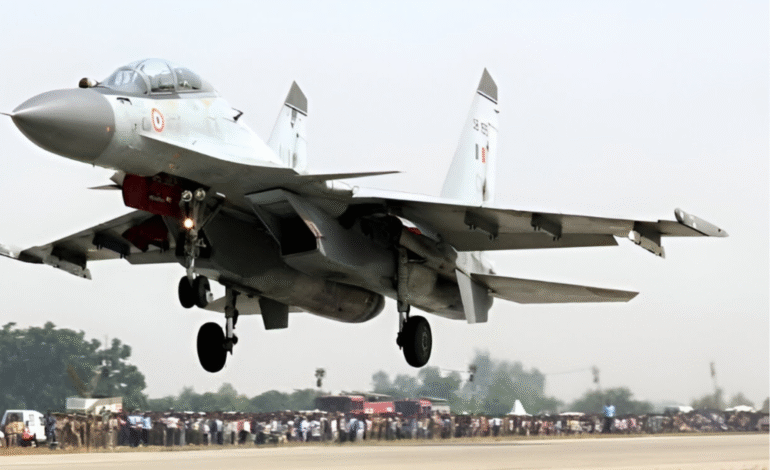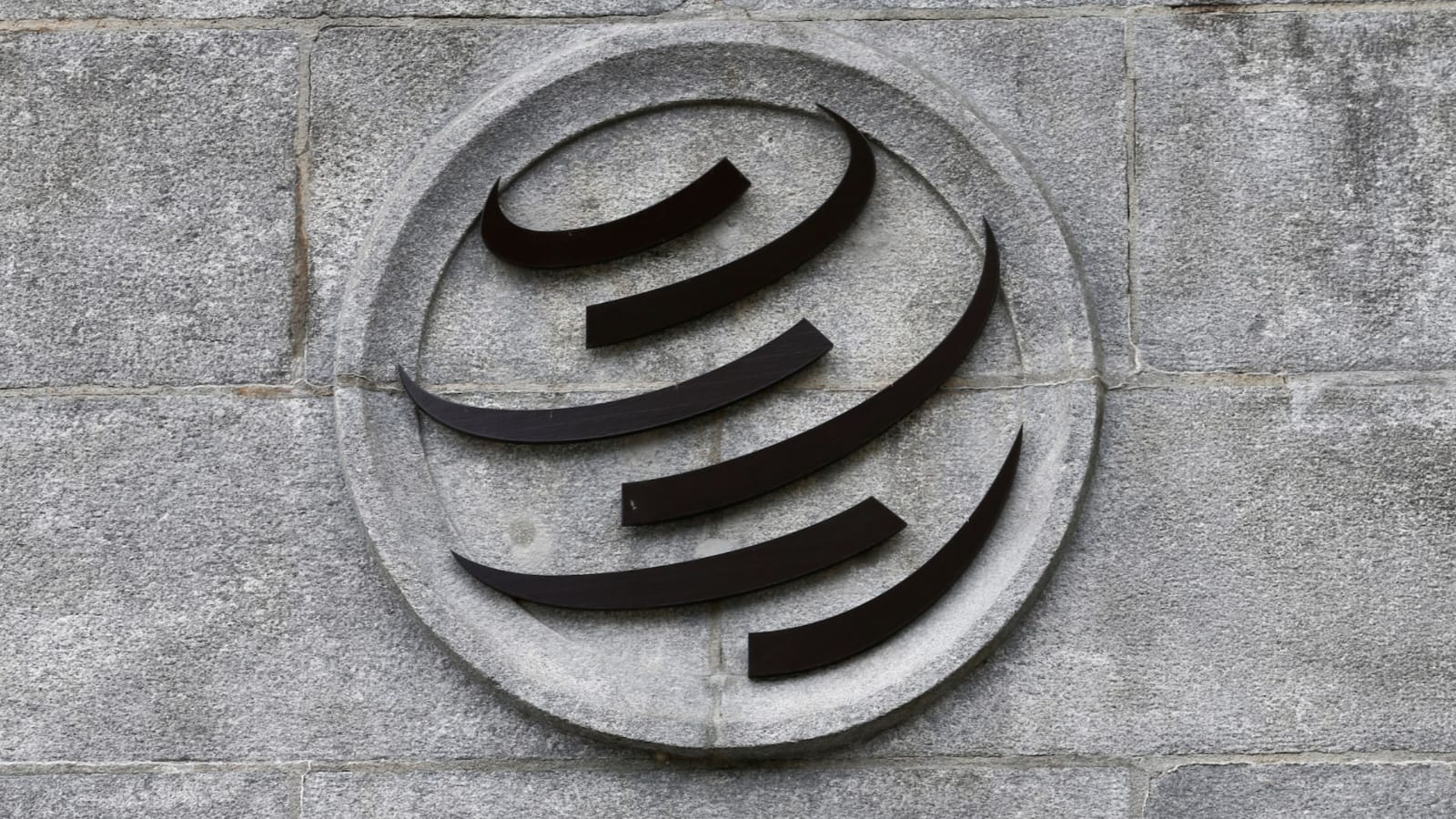IAF Transforms Ganga Expressway into Strategic Airstrip

In a groundbreaking development in India’s defence infrastructure, the Indian Air Force (IAF) recently conducted a highly significant flypast and operational demonstration on a section of the Ganga Expressway in Uttar Pradesh. This milestone event, held on May 2, 2025, in Shahjahanpur, marked a critical step toward integrating civilian infrastructure with military preparedness. The Indian Air Force’s operational readiness was displayed with multiple fighter jet take-offs and landings, including advanced models such as the Rafale, Jaguar, and Mirage.
This exercise highlights the growing role of dual-use infrastructure in strengthening India’s national security and defence posture. By leveraging civilian infrastructure, such as highways and expressways, for military purposes, India aims to enhance its strategic flexibility and readiness in the event of a national emergency or conflict. The Indian Air Force’s operational test on the Ganga Expressway is a testament to India’s forward-thinking approach to ensuring national security and military preparedness.
Strategic Infrastructure Designed for Dual Use
The Ganga Expressway, an ambitious infrastructure project that spans over 594 kilometres, is primarily designed to enhance connectivity and stimulate economic growth in Uttar Pradesh. However, a section of this expressway in Shahjahanpur is being specially developed to serve as an alternative runway for the Indian Air Force. This initiative transforms a civilian expressway into a strategic airstrip asset capable of supporting military operations during times of crisis.
This development is a significant leap forward in the integration of military and civilian infrastructure. By equipping a section of the Ganga Expressway with the necessary infrastructure to support military air operations, India is preparing itself for unforeseen circumstances that may require rapid deployment of air assets. The airstrip in Shahjahanpur is designed to accommodate a variety of fighter jets, including the Rafale, Mirage, and Jaguar, making it an essential addition to India’s national security infrastructure.
Unlike traditional airbases, the Shahjahanpur airstrip is engineered to support both daytime and nighttime operations. This capability is crucial for ensuring that the Indian Air Force can continue its operations even during periods of limited visibility or adverse weather conditions. The strategic importance of this airstrip cannot be overstated, as it serves as a backup facility that can be rapidly activated in the event of a national emergency, thus improving India’s air defence capabilities.
The Importance of the Ganga Expressway for Defence Readiness
The Ganga Expressway serves more than just an infrastructural purpose; it is a key part of India’s broader defence strategy. The airstrip in Shahjahanpur, tested during the May 2 exercise, provides the Indian Air Force with a vital backup airbase that can be used for rapid deployment of air assets during national emergencies. This facility offers flexibility, allowing fighter jets to take off and land swiftly, even when other military bases may be compromised or unavailable.
The exercise demonstrated the Ganga Expressway’s viability as an emergency airstrip. India’s military planners are increasingly aware of the need for alternative airstrips in strategic locations that can be swiftly activated when required. The successful flypast and landing exercises conducted by the IAF on the Ganga Expressway prove that the infrastructure is more than just a civilian road—it is now an integral part of India’s defence infrastructure.
The ability to use sections of highways and expressways for military purposes is a growing trend globally. Nations are increasingly adapting their civilian infrastructure to serve dual purposes, allowing for more flexible and resilient defence strategies. The Indian Air Force’s test on the Ganga Expressway is a part of this trend and shows India’s commitment to adapting its national infrastructure for strategic military use.
Leveraging Technology for Defence Infrastructure Enhancement
The success of the Indian Air Force flypast on the Ganga Expressway was made possible by the integration of cutting-edge technology. The Shahjahanpur airstrip was equipped with 250 CCTV cameras, ensuring that the military could monitor the operational readiness of the airstrip in real-time. The cameras were strategically placed on both sides of the airstrip, providing comprehensive surveillance to track the movements of the fighter jets and the overall performance of the infrastructure.
This integration of advanced surveillance technology underscores India’s emphasis on ensuring that every aspect of its defence infrastructure is up to modern security standards. Real-time monitoring and smart surveillance are crucial for military preparedness, especially when dealing with high-speed, high-stakes operations such as the ones involved in fighter jet operations. The ability to track every detail of operations not only ensures a higher level of security but also helps fine-tune the infrastructure for future military exercises.
In addition to the surveillance technology, high-tech navigation systems were integrated into the Shahjahanpur airstrip to facilitate night operations. The airstrip is equipped with state-of-the-art lighting and navigation systems that allow fighter jets to land and take off safely, even in low visibility conditions. This capability is crucial for maintaining operational readiness 24/7, ensuring that the Indian Air Force can respond quickly to threats at any time.
Defence Infrastructure Integration: A Global Best Practice
India’s approach to integrating civilian infrastructure into defence operations aligns with global best practices. Countries around the world are increasingly recognizing the value of dual-use infrastructure—facilities designed to serve both civilian and military purposes. By adapting highways, expressways, and other transportation networks for military use, nations ensure that they can deploy resources efficiently in times of crisis.
For India, the Ganga Expressway’s airstrip is not just a local or regional asset; it is part of a broader vision to make the country’s infrastructure more adaptable and resilient in the face of global security challenges. This integration of military readiness into civilian development will undoubtedly serve as a model for future infrastructure projects across India and beyond.
Moreover, the success of the Ganga Expressway’s airstrip highlights the importance of strategic planning in defence infrastructure. As tensions rise globally, nations are focusing more on fortifying their defences through innovative infrastructure solutions. The use of civilian roads and expressways as military assets allows for quicker response times, particularly in emergency scenarios. India’s strategic foresight in this area is a significant step towards enhancing national security.
The Ganga Expressway’s Long-Term Impact on National Security
The strategic value of the Ganga Expressway extends far beyond the immediate successful testing of its airstrip capabilities. This airstrip will continue to serve as an essential part of India’s long-term defence strategy, offering the Indian Air Force a backup airbase for operations in case of emergency. Its role in military training and rehearsals will be crucial, as the IAF can conduct simulated missions to ensure readiness in real-world combat situations.
In addition, the airstrip’s continued use for daytime and nighttime operations will ensure that the Indian Air Force’s personnel remain proficient in operating under diverse and challenging conditions. This will contribute significantly to India’s overall defence preparedness, strengthening the country’s capability to respond effectively to both conventional and unconventional security threats.
The integration of strategic airstrips such as the one on the Ganga Expressway into India’s national security infrastructure is a key part of a larger plan to improve military efficiency and readiness. With the constant evolution of security threats, having a multi-use infrastructure system that can be adapted for military operations at a moment’s notice is invaluable.
A Vision for Future Defence Infrastructure Integration
The Ganga Expressway airstrip is just the beginning of a larger shift towards dual-use infrastructure in India. As the country continues to modernize its infrastructure, more projects may be designed with military applications in mind. The integration of strategic defence capabilities into civilian infrastructure offers a cost-effective, scalable solution to enhance national security without the need for separate military-focused developments.
The potential for other national highways and expressways to serve as military airstrips will make India’s defence strategy more adaptable and robust. These strategic assets, combined with cutting-edge technologies and infrastructure innovation, will ensure that India is always prepared to respond rapidly to national security challenges. This innovative approach aligns with global trends in defence infrastructure, where adaptability and resilience are paramount.
Building the Future of National Security with Infrastructure
India’s visionary approach to integrating civilian infrastructure with military readiness through the Ganga Expressway airstrip is a major leap forward in strengthening the nation’s defence capabilities. This dual-use infrastructure model offers an innovative, flexible, and scalable solution to meet future security needs. As the country continues to expand its defence infrastructure, the Ganga Expressway airstrip stands as a pioneering example of how to align national development with defence preparedness.
This strategic initiative ensures that India’s military can operate effectively in diverse conditions and enhances the country’s ability to respond to national and global security challenges. The Ganga Expressway’s transformation into a dual-use airstrip is not just a local achievement but a blueprint for the future of infrastructure development, demonstrating the potential of civilian assets in contributing to national security. As the Indian government continues to invest in this vision, the country will be better positioned to protect its sovereignty and maintain a robust defence posture.







